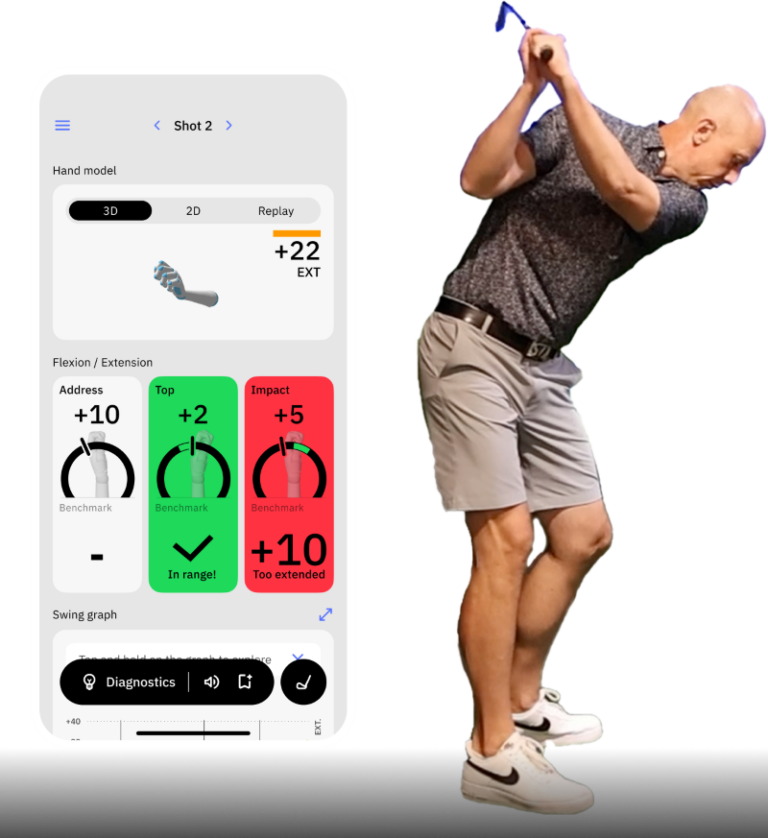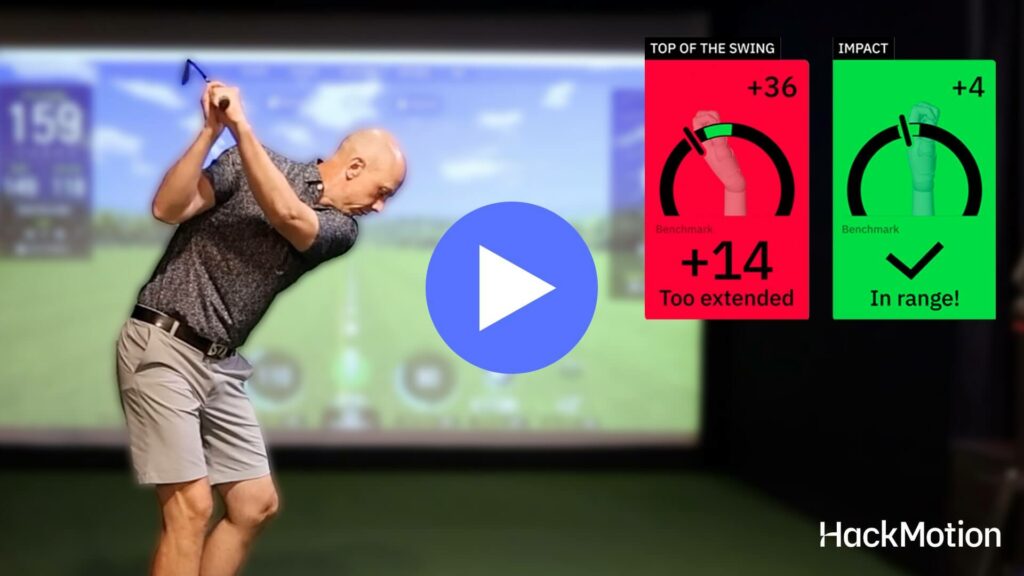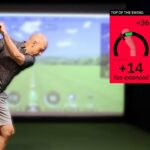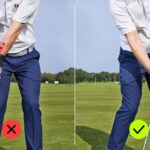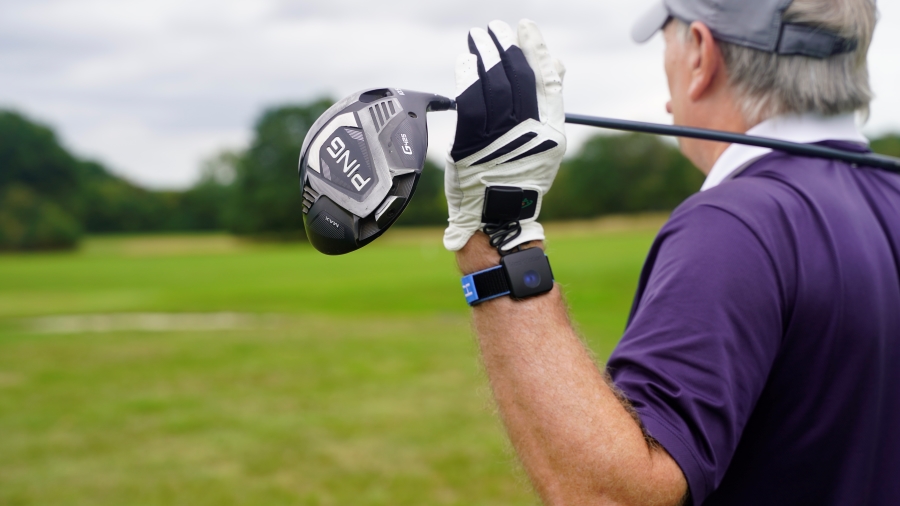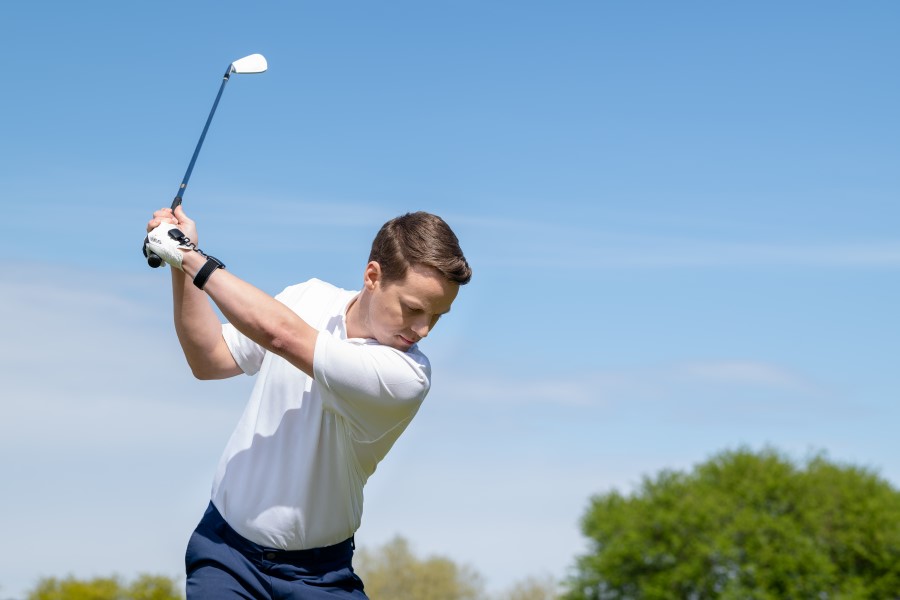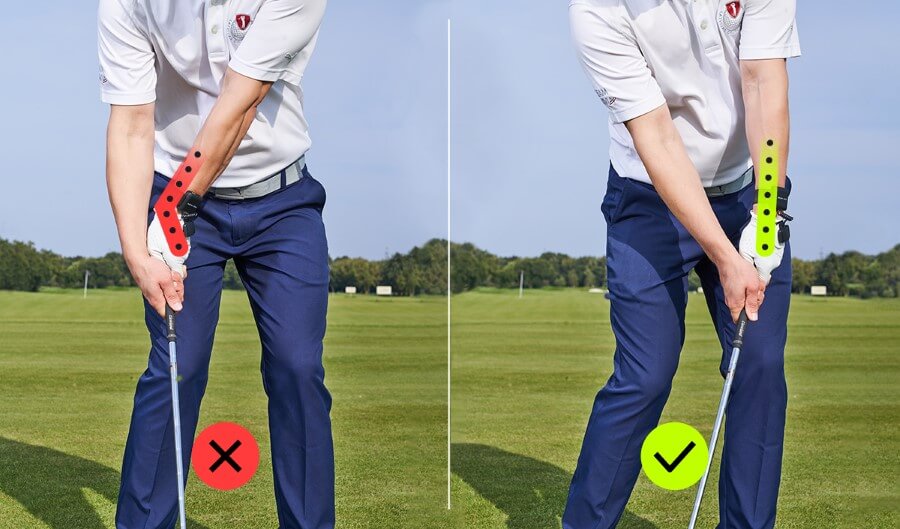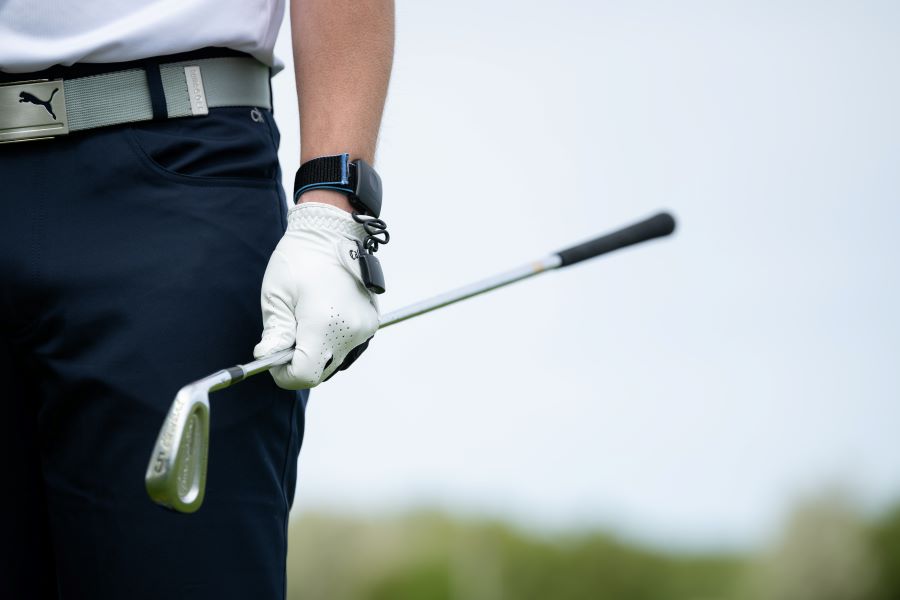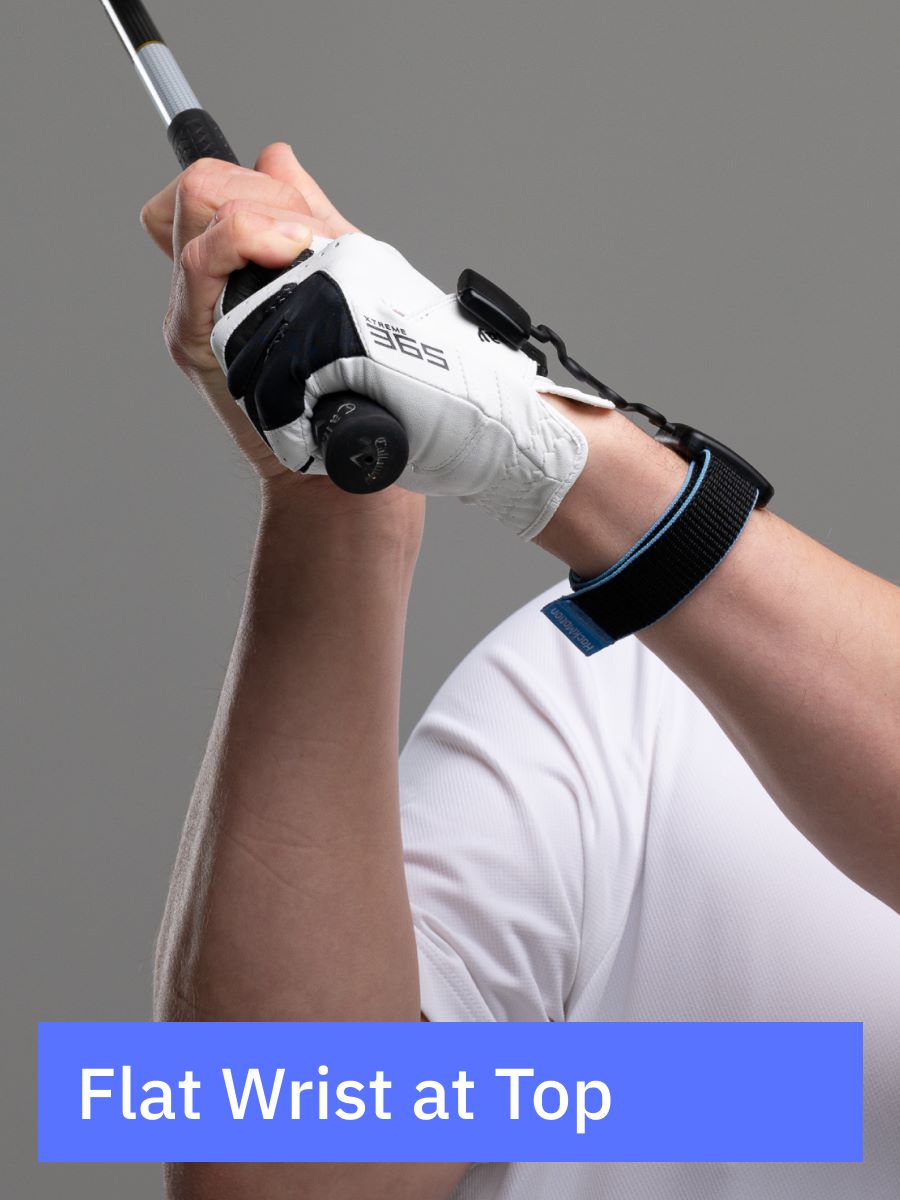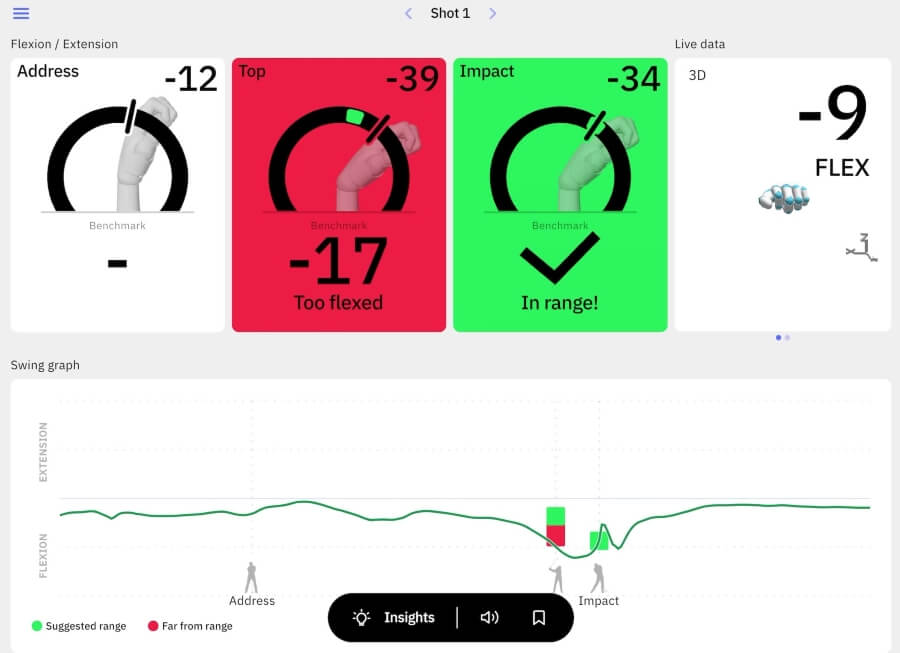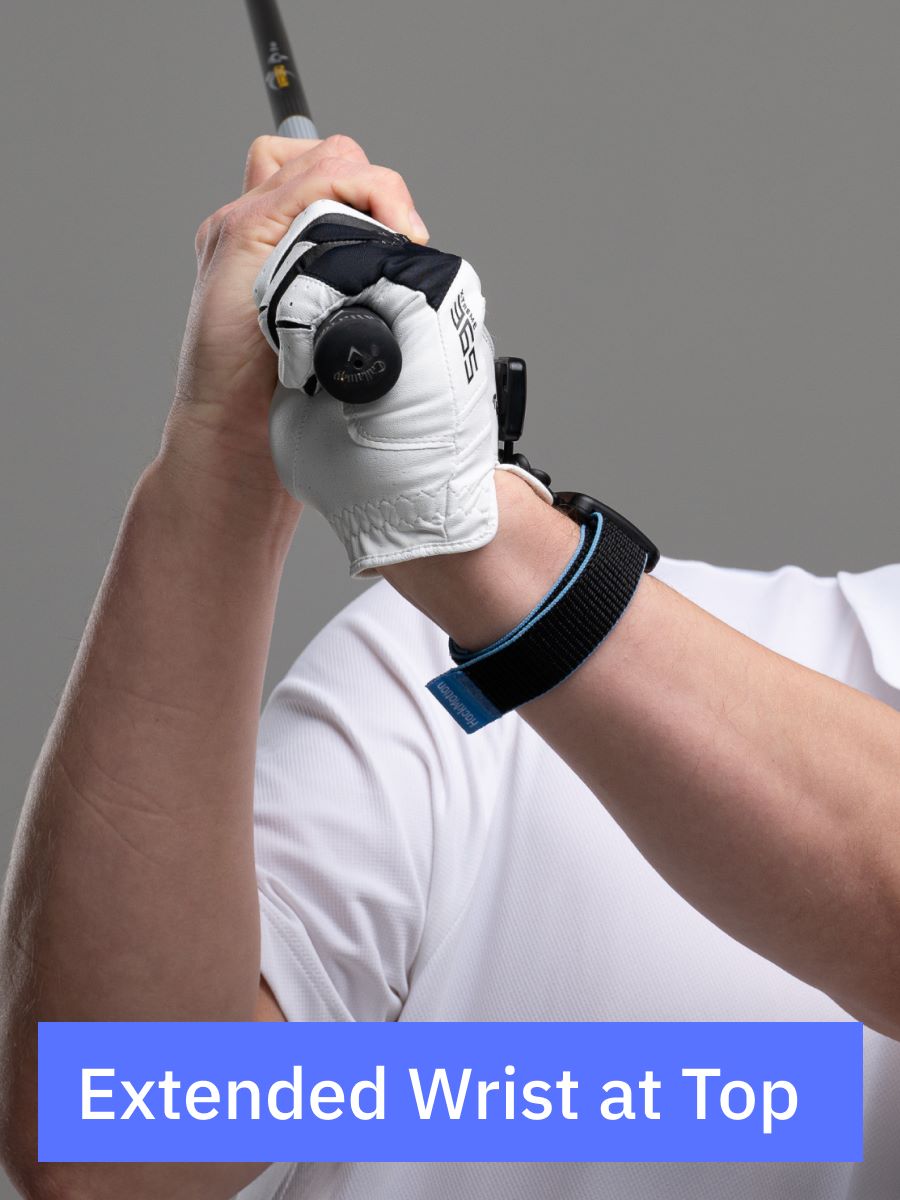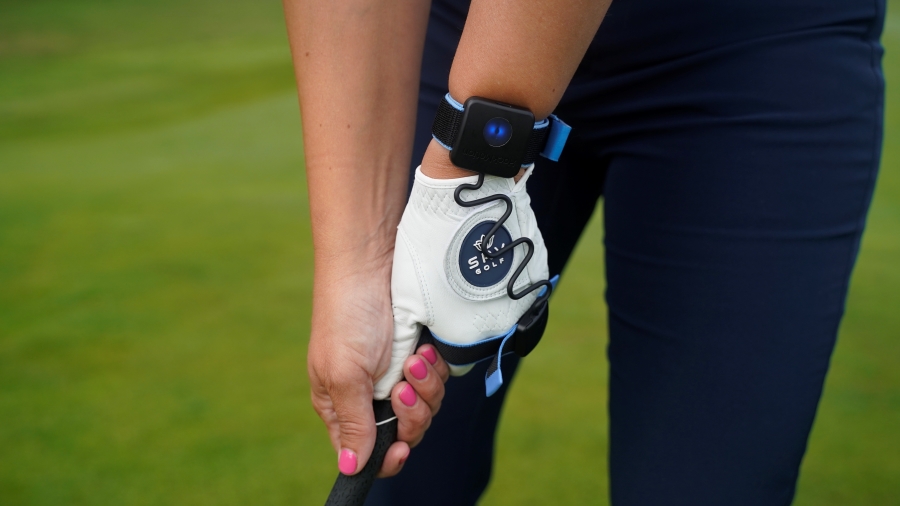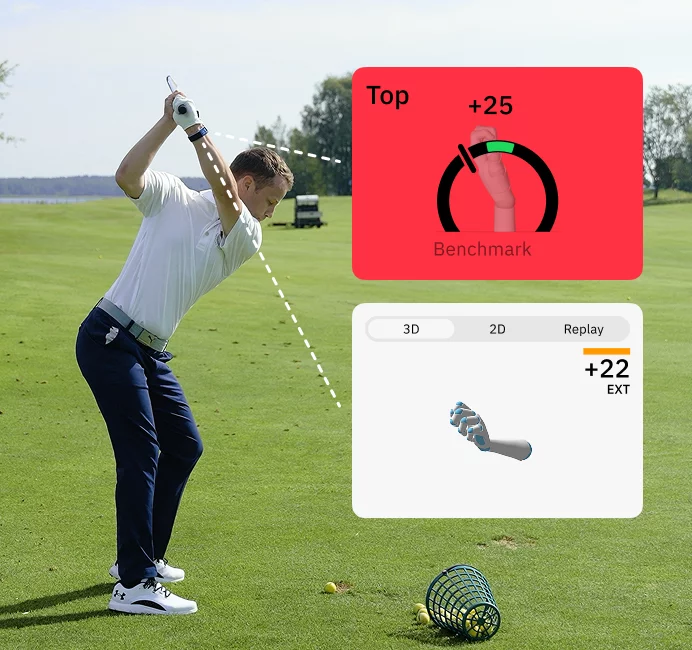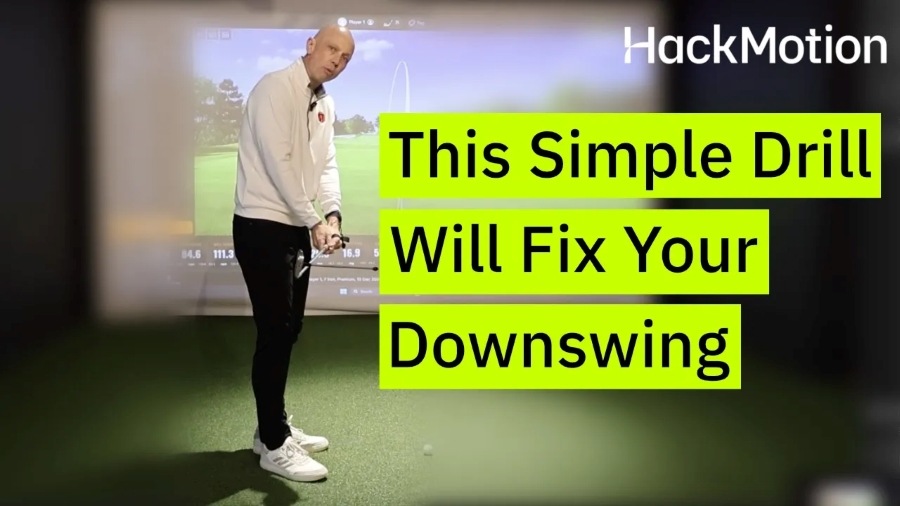Golf Swing Takeaway Mistakes That Ruin Wrist Action – And How to Fix Them
Since HackMotion was developed, more than 1,000,000 golf swings have been analyzed for proper wrist action and movement.
Most of the time, the focus is on how wrist action can be improved to be most efficient at impact.
However, one of the most important factors that is often overlooked are the mistakes players make in the takeaway that lead to poor wrist action throughout.
So, if wrist action feels inconsistent or hard to control, the first place to look is the takeaway.
Proper Golf Swing Takeaway (Key Takeaways)
If you want to come back to this guide later and learn more about the takeaway at least take these points with you for now:
- Build P2, not guesses: At P2 (shaft parallel), the hands move slightly in, hands/shaft/clubhead line up, and the clubface points slightly down because the lead wrist is near flat.
- Connection over hand-roll: Rolling forearms early extends the lead wrist and opens the face—stay connected with a towel under both arms.
- Constrain your path: A barrier rod on the shaft angle avoids both lifting (too steep) and sucking inside (too flat).
- Body leads, wrists follow: Turn the torso and lower body together; don’t start the club with the hands.
- Measure it, then own it: Use HackMotion to check lead wrist near flat at P2, then re-check at impact for a square clubface you can trust.
If you’d rather watch than read, this video by Rob Cheney covers two key drills that improve takeaway mechanics for a more connected, consistent swing.
Contents
How to Fix Your Golf Takeaway Sequence
Every solution for how to fix a golf takeaway problem is tied to the cause. Below are six of the most common issues golfers encounter and practical ways to correct them.
The P2 Checkpoint That Predicts Your Wrist Action
At P2 (when the shaft is parallel to the ground), the hands should move slightly in, and the hands, shaft, and clubhead should line up on a down-the-line view.
The clubface should point slightly down because the lead wrist is close to flat.
If the face points skyward and the lead wrist is extended, the forearms have rolled too much, making recovery difficult.
HackMotion tip: Capture a swing and pause at P2, aim for lead wrist ? 0° (flat). Building consistency here makes it much easier to return to square at impact.
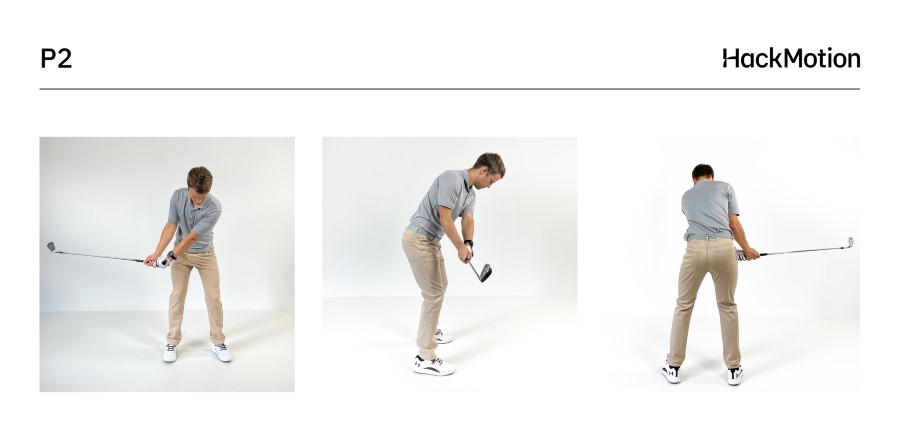
Stop Rolling the Wrists Too Early
Early rotation of the wrists and forearms, or what can be called a wrist roll, makes it hard to get into a consistent flexed position at impact.
The problem with the roll is that it makes it difficult to create a natural hinge later in the swing.
Many golfers who roll the wrist end up with a flat or inside swing path and shots that pull left or spray right.
Using the lower body to turn and taking the wrists out of it just a bit helps to create a more neutral path.
Checkpoint: At P2, use HackMotion to verify the lead wrist is near flat and look for the grooves to point slightly down, not toe-up. If the face is skyward and the lead wrist is extended, the forearms have rolled.
Decrease Grip Pressure
There is natural movement in the wrists that occurs throughout the golf swing. Players need to hinge and unhinge to allow for fluid motion and proper wrist angles.
With excessive grip pressure, the swing becomes stiff, and in many cases, the amount of extension in the lead wrist increases.
One of the best ways to work on decreasing overall grip pressure is to incorporate that adjustment into the pre-shot routine. Keep the club more upright, not resting on the ground, while working through the routine. Allow the body to stay active and avoid letting the hands clamp tightly on the grip for too long.
Overall, grip pressure needs to be strong enough for control, but not so tight that it prevents fluid motion.
Start the Swing with the Shoulders and Legs – Not The Hands
For a great one-piece takeaway, the arms and wrists cannot be relied upon alone. The body and arms need to work as one unit, and to achieve this, the takeaway cannot begin with the hands.
It is a common mistake, even for better players, to try to stay compact on the backswing. This often leads to a takeaway that starts with only the hands, which tends to become shallow and inconsistent.
Try rehearsing swings where the first move is a shoulder or hip turn rather than the hands pulling the club back. This encourages the club to stay on a better path.
Checkpoint: From a down-the-line camera angle, confirm that the hands move slightly in and line up with the shaft/clubhead at P2. If the hands drift out toward the ball, the swing has started incorrectly with the hands.
Don’t Focus on Keeping the Clubface Open or Closed
Many golfers over-focus on the position of the clubface during the takeaway, trying to either hold it shut or open it to the target.
This can cause too much extension in the lead wrist. Instead, the focus should be on keeping the clubface square throughout the takeaway with a one-piece motion.
By the time the club is parallel to the ground, the toe should point upward, showing a square face. Small 9-to-3 swings can help develop this feel. HackMotion provides real-time impact data to confirm greater consistency.
Maintain Width Throughout the Takeaway
A common mistake is allowing the arms to collapse too close to the body during the takeaway. Maintaining width while still hinging and rotating creates more control of the wrists throughout the swing.
Losing width decreases overall power. While proper wrist position is essential for accuracy, it also plays a major role in maximizing distance.
Drills to Get Proper Golf Swing Takeaway Sequencing
Here are some simple but effective drills that train a more connected, consistent takeaway and help you achieve better wrist mechanics.
Towel Connection Drill
This drill develops the connection between the arms and body to prevent lifting the arms or rolling the wrists too early.
Staying connected promotes a neutral takeaway and a flatter lead wrist at P2.
Towel Connection Drill – Step by Step:
- Roll up a towel and tuck it under both upper arms.
- Take the club back to P2, keeping light pressure between arms and torso (don’t drop the towel).
- Use HackMotion to confirm the lead wrist is near flat and the clubface points slightly down.
- Hit half swings while keeping the towel in place to reinforce the connection.
Takeaway Barrier Rod Drill
This drill uses a visual guide to train a takeaway that stays on plane—avoiding lifting too steep or dragging too far inside.
Takeaway Barrier Rod Drill – Step by Step:
- Stick an alignment rod in the ground at the same angle as the clubshaft, just inside the ball at address.
- Rehearse takeaway to P2: hands slightly in, shaft and clubhead aligned, staying above the rod.
- Use HackMotion to check for lead wrist flat (not extended).
- Blend the motion into ¾ swings for improved plane awareness.
Inside Takeaway Drill
If the club rolls too far inside early in the swing, it sets up poor sequencing and an open clubface.
This drill encourages a more neutral, on-plane takeaway and uses HackMotion data to keep wrist positions stable.
HackMotion Inside Takeaway Drill
If your takeaway tends to get too far inside early, this drill is for you.
HackMotion Inside Takeaway Drill – Step by Step:
- Set Up: Address the ball with HackMotion calibrated and ready.
- Start the Takeaway: Move the club back slowly, keeping the clubhead outside the hands for the first 12–18 inches.
- Check Wrist Angles: At P2, pause and confirm the lead wrist hasn’t extended or hinged excessively. Keep it stable in the green zone.
- Use a Guide (Optional): Place an alignment stick along the toe line to prevent the club from moving too far inside.
- Full Swing Reps: Blend the correct takeaway into full swings. Monitor HackMotion data until consistent.
Using the HackMotion to Develop Consistency in the Takeaway
HackMotion provides key metrics on wrist position throughout the swing. The device captures setup, backswing, and impact, and also gives real-time data during the takeaway.
Set a P2 target on HackMotion: aim for lead wrist near 0° (flat). Build repetitions where every rehearsal hits that window before chasing impact numbers.
Experiment with different motions—early wrist hinge, forced face rotation—and notice how they affect wrist angles. Real-time feedback makes it clear which habits are hurting consistency and which ones create a repeatable takeaway.
Cleaning up the takeaway simplifies the process of getting the wrists into the correct position at impact.
FAQs
Here are a few of the most commonly asked questions about the golf swing takeaway and why it makes finding the proper wrist position more difficult.
How do I fix my golf swing takeaway?
Fix your golf swing takeaway by incorporating a one-piece motion that gets the shoulders and lower body incorporated into the first move. Use the HackMotion to track the position of your hands in real-time as you take the club back.
What happens when your takeaway is too inside?
When the takeaway is too far inside, it becomes difficult to recover. Golfers often hit a thin shot or a hook as they try to get the club back on the right path through the ball.
How do I get a better golf takeaway?
A better golf takeaway involves starting with the larger muscles (shoulders and lower body) and leaving the hands and wrists out of it. Avoid rolling the wrists as the first move of the golf swing takeaway.
How do I stop taking the club inside my takeaway?
Use a golf alignment stick on the ground to help keep the club from going too far inside on the takeaway. The alignment stick makes it possible to push the club straighter back and avoid that inside motion.
Final Thoughts
Golf takeaway problems often create poor wrist action before the downswing even begins. Focusing on P2 checkpoints, body-led motion, and proper drills helps build consistency.
If wrist position at impact still feels off, revisit the takeaway to make sure the club starts back correctly.
HackMotion enables players to measure and refine their wrist mechanics in real-time, building confidence, consistency, and more solid contact.
